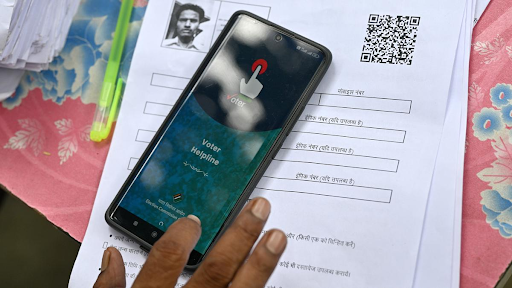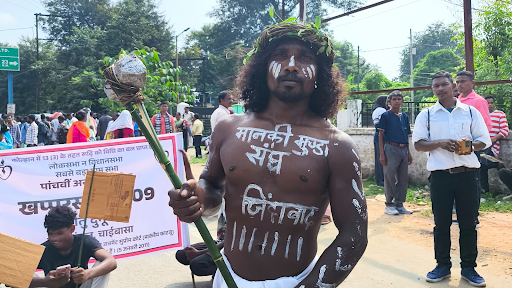Description

Copyright infringement not intended
In News
- The Chief Justice of India stated that the Indian Judiciary is overburdened because of the system and he also mentioned that it is difficult to find good lawyers to fill judicial vacancies in High Courts.
- The Chief Justice highlighted that increasing the number of judges will not solve the problem of pendency.
- He said that 20% of the judicial posts in the High Courts were vacant.
- He also criticized the government for holding up Collegium recommendations for months.
Present Status
- More than 70 thousand cases are pending in the Supreme Court according to the latest data available on the National Judicial Grid.
- Nearly 60 lakhs cases are pending in the High Courts.
- Over 40 million cases are pending in Subordinate Courts across the country.
- The high pendency of Cases in Some tribunals indicates that the objective of setting them is not achieved.
- According to data compiled from the National Judicial Data Grid, more than one lakh cases are pending in district and taluka courts for 30 years. Over 90% of these cases are pending in just 4 states: Uttar Pradesh, Maharashtra, West Bengal, and Bihar.
- The Ministry of Law & Justice stated that the government, including PSUs and other autonomous bodies, are party to around “46%” of court cases pending in various courts in the country, making it the biggest litigant in the country.
Why is there high pendency in courts?
- Lack of sufficient number of judges and high vacancies in the judiciary and long leave to judges deteriorate the already grim situation.
- Frequent adjournment of the cases even on frivolous issues.
- India has very few courts compared to its huge population.
- Excessive litigation from the government side, the government is the largest litigant, responsible for nearly half the pending cases and most of them are on petty issues such as interdepartmental conflict.
- Lack of quality judges in the lower judiciary leads to appeals to the higher judiciary in most cases.
- Archaic laws or vague laws present another challenge as it takes time to interpret the law and most of the time matters go to higher courts through appeal.
- Poor police investigation leads to poor collection of evidence and hostile witness thus adjourning the hearing for the next date.
- Increasing the number of use of Public interest litigation (PIL).
- Increasing awareness among citizens about their rights and law courts.
What are the consequences of the pendency of cases?
- Common people’s faith in the judiciary declines.
- It denies true justice to under-trial prisoners, many of whom get acquitted after spending many years which is a violation of their fundamental rights and also spoil their whole life.
- The economic cost of pendency is also very huge. Projects worth billions get delayed amid delays in judgement. It is estimated that delay in justice costs 1.5% of GDP annually which also deters future investment in India.
- Delay in justice also fails to create deterrence in the mind of criminals thus crime goes on perpetuating.
- Overcrowding of jails is also a result of a delay in judgment.
- The criminalization of politics keeps on rising as culprits are not punished timely
Concerns
- Case pendency Hurts investors’ confidence.
- Economic activity is getting affected by high pendency and delays across the legal system.
- It adds a burden on Courts and collaterally harms other litigants.
- It increases project costs and delays projects.
- Slows down administrative processes, delaying decision-making.
- Diversion of precious resources.
- Effects ease of doing business.
NCERT BOOK - https://www.iasgyan.in/ig-uploads/images/ncert_amazon_(1).jpg
Steps taken to reduce Pendency
- Infrastructure has been improved from the Supreme Court to the lower court.
- The Central government increased the number of Judges in the Supreme Court from 31 to 34.
- The government is also emphasizing the increasing use of lok adalats and other alternate dispute settlement mechanisms.
- Special courts deal with technical matters so that judgement can be pronounced on time.
- Adoption of “National Litigation Policy 2010” to transform the government into an Efficient and Responsible litigant.
- All states formulated state litigation policies after National Litigation Policy 2010.
- Legal Information Management and Briefing System (LIMBS), was created in 2015 with the objective of tracking cases to which the government is a party.
- The Supreme Court advised the centre that criminals sentenced to imprisonment for 6 months or a year should be allocated social service duties rather than be sent to further choke the already overflowing prisons.
Steps need to be taken
- National Litigation Policy should be revised.
- Address all 3 stages of dispute:
- Pre-litigation
- Litigation
- Post litigation stage.
- Establish Fair accountability mechanisms, Consequences for violation must be provided.
- Appointment of a Nodal Officer to regularly monitor the status of the cases in every department.
- Promotion of alternative dispute resolution mechanisms to encourage mediation.
- Coordinated action between government and judiciary.
- Judicial capacity should be strengthened in the lower courts to reduce the burden on higher courts.
- Increase expenditure on the judiciary.
- Improve court case management and court automation system.
- Create subject-specific benches.
- Tax departments must limit their appeals as their success rate is less than 30% at all three levels of the judiciary.
- Robust internal dispute resolution mechanisms
- Step-by-step online dispute resolution must be adopted as done by the Ministry of Consumer Affairs.
- Judges should write Shorter and more Pointed judgments.
Way Forward
- Courts need to monitor the progress of Cases based on urgency and type of Case.
- Courts must set a time limit to dispose of certain types of Cases.
- Understand why Some Courts perform well despite a Shortage of judges and adopt Such Courts as role models.
- Use of information and communication technology to improve the efficiency of the courts.
- Increase the number of judges and fill the vacancy as soon as possible.
- Increase the number of courts in India to tackle the huge population.
- Improving the police investigation and scientific way of collecting evidence.
- Reduce the leave of judges and increase the number of days of working in courts.
- Only genuine PIL must be entertained by Courts and courts must inflict heavy costs on frivolous PIL.
- Analytics tools can be developed in a manner that helps the judges monitor Cases based on parameters Such as how long an accused has been in judicial custody, Cases that Can affect the General public, and Cases that have been long pending.
- Alternative methods should be used for dealing with non-criminal offenders and petty criminals.
https://epaper.thehindu.com/Home/ShareArticle?OrgId=G01AITU4J.1&imageview=0
https://t.me/+hJqMV1O0se03Njk9













